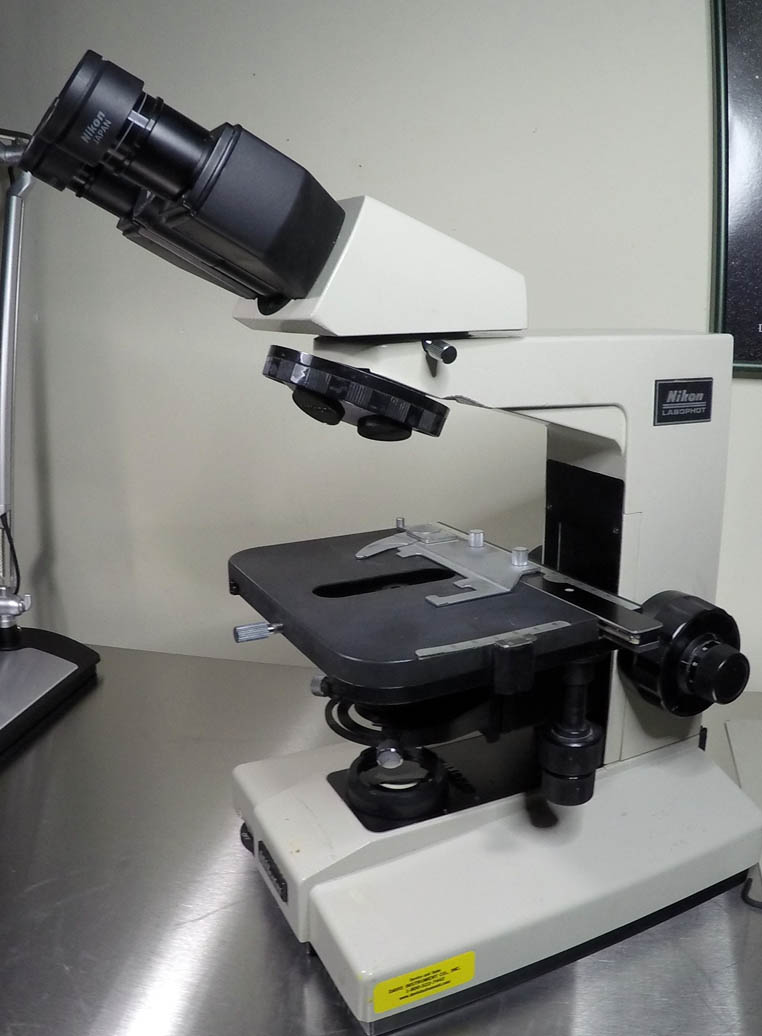The Nikon Labophot series of microscopes, produced in the 1980's, were simple, but capable, basic upright research microscopes. In general, they are built like tanks and it is not uncommon to see them still used everyday in real working environments. Although the Opthphot series has a few more features, the Labophots were similarly expandable, for phase contrast, polarization, DIC, episcopic illumination and epi-fluorescence.
The Labophot and Optiphot series were nearly contemporaries, with the Optiphot being the earlier, and more capable of the two. The principal upgrades from the Labophot series are improved, brighter built-in diascopic illuminator, the ability to adjust the specimen stage height, accomodating a greater variety of objective parfocal distances, larger condensers, or tall specimens, and a removable objective turret.

The instrument shown here is for diascopic illumination, with the light coming up from the bottom. Other models, which also simply say Labophot, have no light source at all in the base - an episcopic illuminator must be added, unless you plan on lighting from the side.
The Labophot 2 has a more rounded appearance, slightly less utilitarian look, following the Optiphot 2. I have yet to see a Labophot 2 that had its lamp house intact, whereas the original Labophot seems to have less of an issue with this.
One of the principal points of failure is the condenser stage, with a rack and pinion drive. The pinion gear is made of plastic and has a tendency to snap. The fine focus gear is also plastic and tends to snap.
Here I have disassembled the base and fine focus mechanism.

This image was taken from the Labophot manual, showing the diascopic light path. I think they called the purely diascopic version (bottom light) the biological microscope, the purely episcopic version (top light) a metallurgical microscope, and if it had both, plus polarization modifiers, then it is called mineralogical. I am unsure exactly what models of the Labophot and Labophot 2 which were officially produced, but I have definitely seen versions with no top light, and versions with no bottom light. There is also the "Pol" version, with a circular stage and polarization components installed.
Brooke Clarke also has a lot of information about the Labophot.